Contents
As the good people of Kentucky say, “Bourbon is the best thing that ever happened to corn.” Homemade moonshine made from corn is not supposed to be called bourbon, but if you approach the matter with enthusiasm, you will get a drink that is in no way inferior to the American legend. So let’s recharge this enthusiasm.
Unlike Scotch and Irish whiskeys, which can be safely described as “restrained European classics”, bourbons are famous for their bright, rich and very explosive aroma. This was appreciated by the bartenders – such a drink will definitely not be lost in cocktails. Today we will not go deep into the history of American whiskey, but only superficially touch upon the main points that, one way or another, are important in the preparation of real corn moonshine with a claim to bourbon.
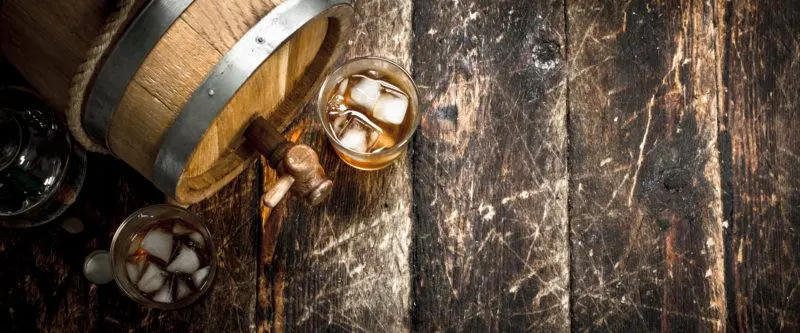
In 1964, the US Congress, by a special resolution, declared bourbon the national drink, thereby reserving the name “bourbon” for its people. But if you dig deeper, then bourbon is just rustic corn moonshine and nothing more. This is if you do not take into account the modern industrial production of this very “moonshine”, but you should not take it as a guide. When I talk about good bourbon, I don’t mean marketing gimmicks like J&D, J&B, and J&.
A couple of years ago, a real “bourbon” revolution began. Fortune magazine described this period with the following lines: “The most coveted drink on Wall Street is no longer Screaming Eagle Cabernet or 40-year-old Glenfiddich, but 23-year-old Pappy Van Winkle bourbon, which is so rare that it costs $3,500.” This revolution stands on two fundamental pillars: single barrel (one-barrel) and small batch (bourbons of small batches). These drinks are produced in limited quantities, mainly in small family distilleries.

I wrote this to the fact that today you do not need to be the owner of a huge enterprise in order to prepare and drink excellent drinks, in particular excellent bourbon. Sorry, not bourbon, but corn moonshine, corn whiskey or even corn bread wine. Name your distillate whatever you want.
Corn Whiskey Recipe Claiming American Bourbon
Unlike whiskey, which is made primarily from barley malt, bourbon is made from corn, more specifically from unmalted corn kernels. In order for a drink after aging to be called bourbon, in addition to the conditions of production in the United States, the composition of the wort, in our opinion, must include at least 51% corn grain. An exception is the so-called corn whiskey, which must contain at least 80% corn of the total amount of grain in the mash.
By the way, a little about corn whiskey. It is considered the “lowest” of American whiskey, but for us it is a great opportunity to make an unadulterated drink that can be called 100% corn whiskey. It does not require aging, has a sweet floral-grain aroma, a pleasant grain taste. In the future, it can be refined by aging in a barrel, but it is better to do this with bourbon, in the mash of which, in addition to 51% corn and 20-30% malt, you can add other cereals and achieve an interesting result.
The right brew for corn whiskey
The choice of corn is very important. Our moonshiners have long noticed that whole grain corn, and even worse “crushed” from “animal markets”, gives a mediocre drink. In this regard, it is better to buy corn raw materials in a regular supermarket (flour, cereals). Another important component of the mash is malt, the main task of which is to turn corn starch into sugar. The malt must be unfermented. You can use any: barley, rye, wheat, oatmeal, corn, etc.
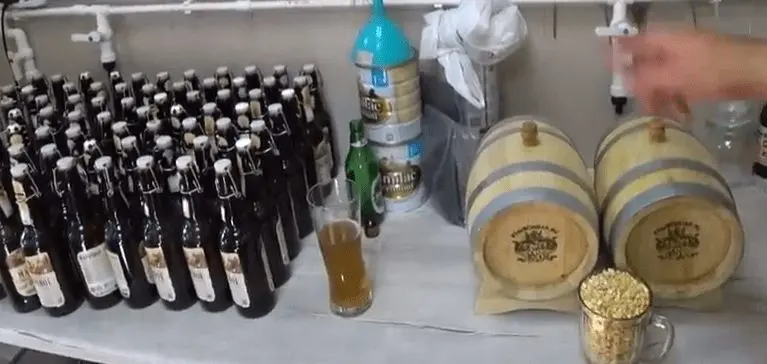
The only condition for malt is that it should be the lightest, scientifically speaking, with the least color. Malt color is marked from 0 to 1500 units. For bourbon, specimens up to 50 color units are suitable, and preferably up to 15. In fact, it is better to germinate the malt yourself or find non-beer malt, as it is dried at high temperatures and some of the enzymes die in it (we are, of course, not talking about the base malt, the enzymatic activity of which is quite high). For beer, this is nothing, but for bourbon it’s really bad – the wort is most likely not completely saccharified.
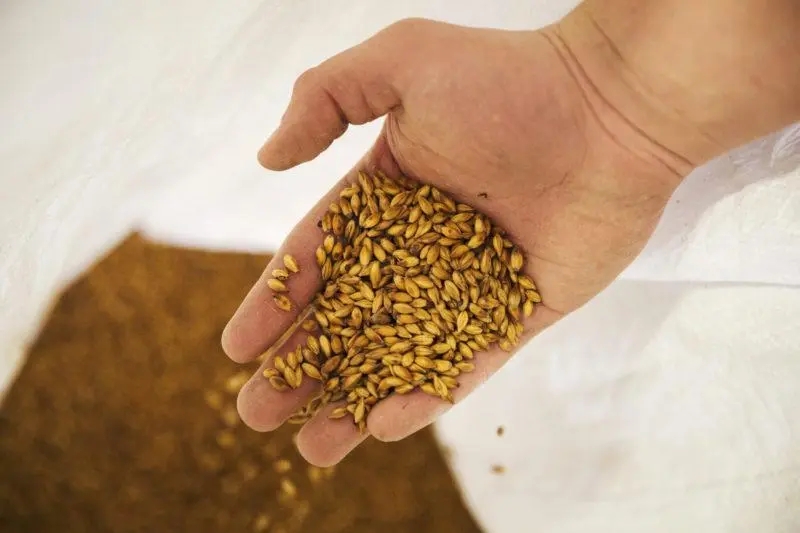
If you decide to make your own malt, then it will probably be green malt, which is considered stronger and should be taken in an amount of no more than 15% of the grist weight. In general, you can experiment with malt, as well as with the remaining 19-29% grist (51% corn, 20-30% dry malt). This is the basis of whiskey’s personality, and you can influence it. You can take a little rye or buckwheat to give the drink sharpness, or, for example, a little peas for “chocolate” shades.
I will give several options for the grist that our moonshiners use and get delicious corn moonshine:
- 100% corn: 80% corn, 20% white corn malt
- 80% corn #1: 80% corn, 20% green wheat or barley malt.
- 80% corn #2: 80% corn, 12% rye, 8% barley malt.
- 70% corn: 70% corn, 30% dry malt.
- 51% corn #1: 51% corn, 24% rye, 25% pale barley or wheat malt up to 15 pcs. chromaticity.
- 51% corn #2: 51% corn, 24% wheat, 25% wheat or any other pale malt.
- 51% corn #2: 51% corn, 24% barley, 25% wheat or any other pale malt.
In general, there is room for imagination. Having decided on the composition of the grist, you can start preparing bourbon mash.
1. First you need to boil the corn to destroy the cells in which the starch is “sharpened”. So, we take corn in the form of cereals, crushed or flour, and pour it into the digester. Other grains that we decided to add to the mash should also be added there. Corn boils very, very strongly, so it is recommended to immediately add 5-10% malt to the grist to thin the mash. This should be done after heating our wort to 70-72 degrees.
It’s time to talk about the hydromodule – the amount of water for our mash. Speaking in Russian, in 1 liter of mash there should be as much malt and grain as the yeast can quickly process (or rather, sugar, which will be obtained after malting). I will not reinvent the wheel and go deep into theory. The ideal hydromodule for almost all grain mashes is ¼. This exponentially also depends on your equipment, but in most cases ¼ is the optimal proportion.
2. Pour corn and other components of the mash into the brew kettle, add 4 parts of water from recalculations for the entire grist, heat up to 70-72 degrees, add 5-10% crushed malt (all malt can be crushed with a meat grinder). We boil the wort at 100 оFrom about 2 hours, stirring constantly (an automatic stirrer is very useful here).
3. Cool the mash to 62-65 оC and add the rest of the malt. The temperature is very important here: if it is higher, the malt enzymes can “die”, and if it is low, the malting process will be too slow (which is why you need an accurate thermometer). Next comes a very important stage – a temperature pause. After adding malt and stirring the wort in it for 2 hours, you need to maintain the temperature in the range of 60-65 оC. During this time, the bulk of the corn starch should be saccharified, and if not, then this will happen during fermentation, since the enzymes will still continue their work.
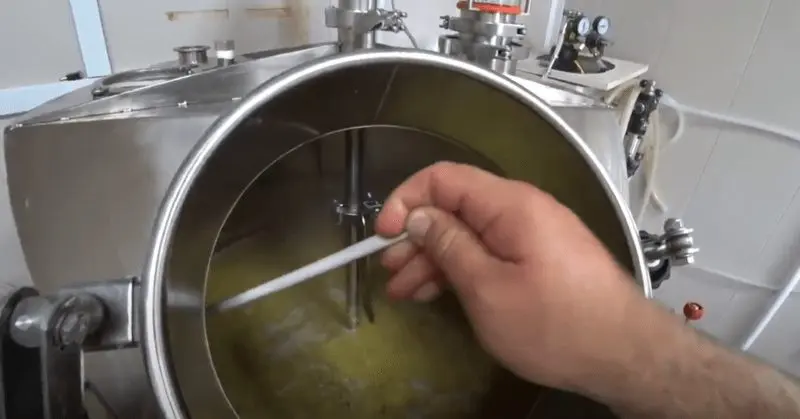
4. It’s time to pitch the yeast. To do this, the mash needs to be cooled to a temperature comfortable for the yeast to work – 25-30 оC. We determine the quantity according to the instructions for yeast, but you can peep in the recipe for sugar mash. Enough 100 g pressed or 20 g dry per 10 liters of mash. Dry bakers, such as Saf Levure, are the best fit here. After adding the yeast, we put the mash in a cozy corner and wait until it ferments. It ferments quickly and intensively, only 2-4 days.
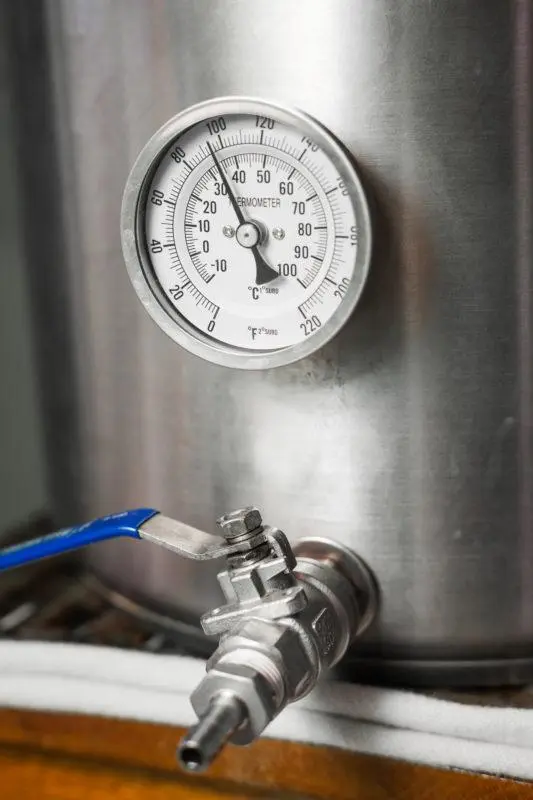
Distillation of moonshine from corn
There is no great wisdom here. Be sure to use a double distillation. The first time you can drive by direct heating on the stove or steam (the principle is briefly described in apple moonshine). Before pouring the mash into the distillation cube, it must be filtered through gauze or a sieve. You do not need to do this if you are driving a ferry. The first time, to obtain raw alcohol (hereinafter referred to as SS), you need to drive almost dry (up to 3-4% alcohol in the stream) – grain mashes are very reluctant to give up alcohol. After the first distillation, a SS with a strength of about 30% is obtained.
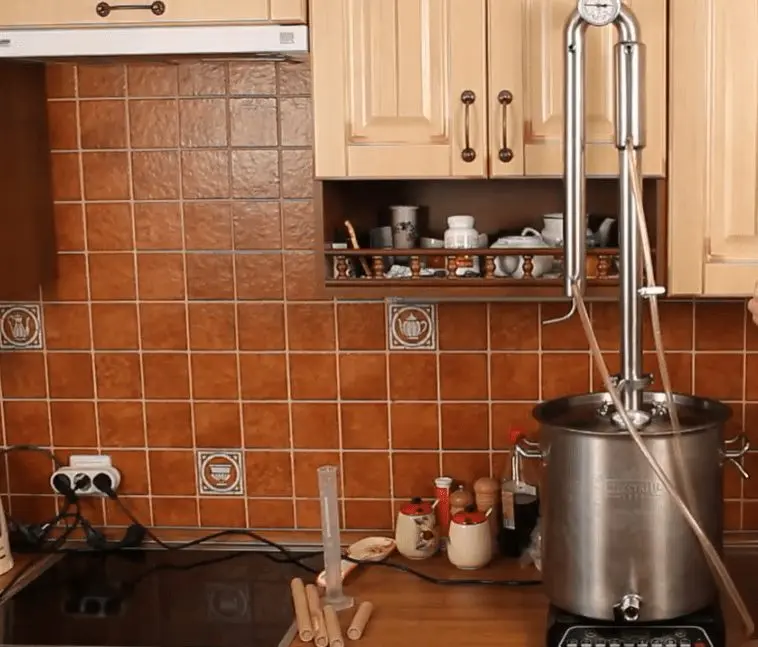
You can distill through a bubbler, pre-filled with a small amount of our home brew. This will improve the organoleptic.
The second time you can distill immediately. Be sure to drive fractionally, with the separation of heads and tails. Here a lot depends on your equipment, but on average it is enough to take 10% of heads and 10% of tails from absolute alcohol in SS (do not forget that the taste of such distillates largely depends on the “pieces” of heads and tails in the middle fraction). The second distillate usually has a strength in the region of 50-70% (this is if you are not a rectifier). In fact, you have just received corn moonshine, the so-called “white dog” (“white dog” – unaged corn distillate in the jargon of American distillers).
Bourbon corn moonshine aging
In order for the “white dog” to become bourbon, the distillate must be aged in a new charred oak barrel. In the USA, it is practiced to filter the distillate through maple charcoal, after which it is poured into barrels. According to the “white dog” law, before pouring into a barrel, it must be diluted to a minimum of 62,5% vol. At home, only the drink that has been aged in a new charred white American oak barrel for at least 2 years is called bourbon. Due to new barrels, bourbon matures very quickly, so in practice it is rarely aged for more than 4 years (with the exception of small batch bourbon, which some craftsmen manage to withstand up to 20 years and not spoil the drink).

Caramel, by the way, is not needed here, since the burned barrel already gives the drink a beautiful, rich color. And the distillate itself is not as capricious as its overseas brothers. It is aged not in cellars, but in ordinary warehouses: hot in summer, cold in winter. In other words, your corn whiskey can be stored in a barrel and in an apartment. To do this, the distillate must be diluted to 45-50%, for a damp basement – 50-55%. Buying a barrel today is not a problem and they are relatively cheap, so you can make a drink with a claim to “true bourbon”.

At the same time, we do not forget that in small barrels, with a volume of 5-50 liters (industrial ones can hold 2000 liters of drink), the distillate is “ennobled” much faster and good corn whiskey can be obtained after 3 months, and after 8-9 months and even a real masterpiece. The barrel, of course, must be prepared. Burning is not required, but desirable. You can get by with wood chips / chips, it’s better to burn them here (Don Pomazan, in his article on cognac imitation, described the process of making wood chips and aging moonshine / alcohol on it).
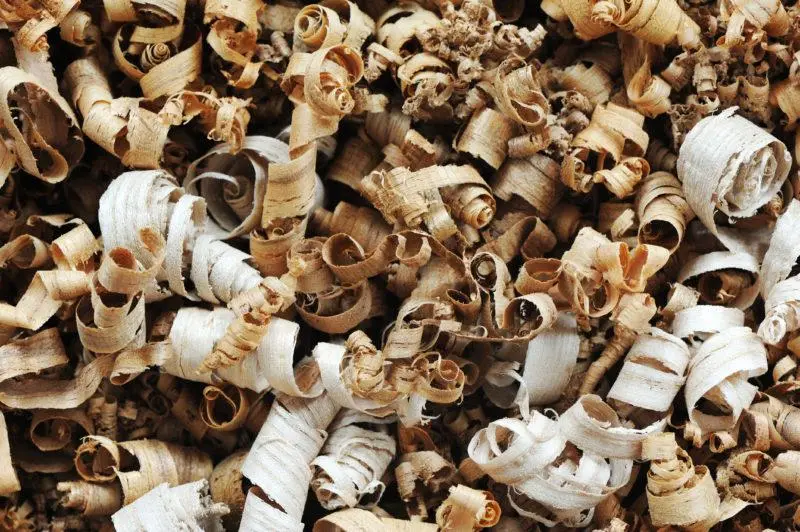
That’s all the wisdom of homemade bourbon, or rather corn whiskey or corn moonshine. In the USA, the culture of making this drink has developed over decades, if not centuries, and they will have more experience. But here in Russia we are not, as they say, made with a finger. Charged with enthusiasm and drove to drive!
PS In the next article I will tell you about a very wonderful moonshiner of our time (unfortunately now deceased) and I will tell you a recipe for delicious corn moonshine with the addition of sugar, in Tennessee, so to speak (told).









